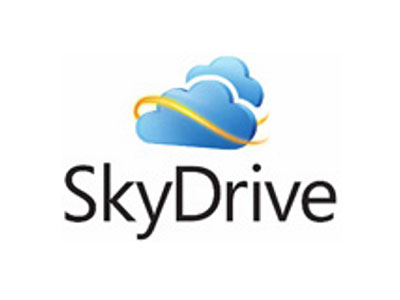Features of online storage services :-
Storage Space
One of the most important things to consider when researching online storage services is the allotted storage space. The best cloud services are those that provide unlimited storage for a flat monthly fee. This means you can store as many files as you want without the service ever capping your limit. If storage space isn’t your top priority, opt for an
online data storage service that delivers a low cost per gigabyte.
Features
Online storage services should provide practical features that make uploading and sharing your files easy and convenient. For instance, the service should provide folder sharing, offline syncing and file versioning in case you lose the most recent version of a stored file.
Additionally, there should be backup options so files are automatically updated whenever you make changes, and you should have the ability to restore any file you delete from your account.
File Access & Support
Online storage services should allow you to store any digital file, regardless of type. They should also provide widespread accessibility to those files. This means you should be able to upload and access your data from several devices, including multiple computers and various mobile devices. Any service you are considering should also provide access to
your account from any web browser, as well as a desktop app that allows you to easily drag and drop files or folders to sync to your online account.
Ease of Use
Look for online storage services that are powerful yet simple enough for the average consumer to understand and use. A clean, intuitive account interface fosters easy navigation. Uploading files and software installation, if required, should be straightforward. A good online storage service will allow you to begin uploading files to your account
within a few minutes.
Help & Support
Even the most user-friendly online storage services should be supplemented with useful help and support options. Troubleshooting and technical resources should be available, including video tutorials and a comprehensive knowledgebase. Direct customer support should also be offered via telephone, email or live chat.
10 best online storage websites:-
SugarSync is considered as the black
 horse in online storage services. SugarSync outstands with its ‘Magic Briefcase’ option; that is anything placed there is automatically synced across all devices registered to the user account. The ‘Web Archive’ is another option that stores files, but it disallows user’s to share the same file if the originals are changed. The client interface is also considered as one of the best, as it provides the overall view of files synced across all the devices in the cloud.
horse in online storage services. SugarSync outstands with its ‘Magic Briefcase’ option; that is anything placed there is automatically synced across all devices registered to the user account. The ‘Web Archive’ is another option that stores files, but it disallows user’s to share the same file if the originals are changed. The client interface is also considered as one of the best, as it provides the overall view of files synced across all the devices in the cloud. SkyDrive provides storage services for both Windows and Mac operating systems. Users can upload individual files, where bulk uploading is not supported through browsers. The user interface is considered to be the most pitiable version among storage services, as the option of sharing files is limited to its website. But still SkyDrive provides the option of direct uploading of files and documents from Microsoft’s Office Web apps and can be distributed directly to users in Hotmail contact lists.
SkyDrive provides storage services for both Windows and Mac operating systems. Users can upload individual files, where bulk uploading is not supported through browsers. The user interface is considered to be the most pitiable version among storage services, as the option of sharing files is limited to its website. But still SkyDrive provides the option of direct uploading of files and documents from Microsoft’s Office Web apps and can be distributed directly to users in Hotmail contact lists.
Minus features this list mainly in the name of its characteristics meant for consumers instead of corporate’s. Users can sign up into Minus using their Facebook and Twitter accounts. Most of the Minus’s features are meant for non professional uses. Users can directly pin their links of uploaded files to social networking sites with a click and can follow each other along with sharing each other’s feeds. The client interface is similar to every other storage services, the usual drag and drop. Minus also offers a unique function of snap and uploading screenshots, including a snapshot of webpage.
 Google Drive works similar to Dropbox and SkyDrive. Google Drive creates a folder for every user to host his files through cloud as it offers automatic synchronization. But the sync can be done only through Drive’s web interface which supplies redirected links to Google contacts and groups. Google Drive also grants additional benefits like direct uploading of files from Google Docs and groups.
Google Drive works similar to Dropbox and SkyDrive. Google Drive creates a folder for every user to host his files through cloud as it offers automatic synchronization. But the sync can be done only through Drive’s web interface which supplies redirected links to Google contacts and groups. Google Drive also grants additional benefits like direct uploading of files from Google Docs and groups.
Dropbox has its app version for the system, so that user can simply drop the files to be uploaded and the synchronization happens silently in the background. Dropbox also offers space for sharing, but it can be only done with user’s Facebook friends. Another noticeable feature is that Dropbox allows files to be linked to directly, without a click-though download or preview page, to a special ‘Public’ folder created in the user’s Dropbox account.
Box provides file management and file uploading via the drag and drop technique, but it also offers the Java based bulk uploader for a whole bunch of files and subfolders. Links to social sites and discussion threads can be created from the web page itself. Also in Box, the user can direct a link to the file instead of its upload page.
 YouSendIt gets better and better with each level. The higher levels are for business users as it provides add-ons similar to ShareFile. Also you can set expiry time period for yourself. But the first and foremost thing is that YouSendIt requires an account and a login ID. The client interface of YouSendIt is almost similar to Dropbox, where you are required to drop the files in the folder, with the synchronization label overlapping the files. Still with its limitations, YouSendIt does well with all common file types.
YouSendIt gets better and better with each level. The higher levels are for business users as it provides add-ons similar to ShareFile. Also you can set expiry time period for yourself. But the first and foremost thing is that YouSendIt requires an account and a login ID. The client interface of YouSendIt is almost similar to Dropbox, where you are required to drop the files in the folder, with the synchronization label overlapping the files. Still with its limitations, YouSendIt does well with all common file types. ShareFile is more of an enterprise style rather than the consumer manner. ShareFile offers no free plan except for a 30-day free trial for all account tiers. But the upper tiers are offered with desktop widgets and Outlook plugins. One of the standout features of ShareFile is that it’s written in Adobe Air, which means the app can generate a download link for each file or folder. Along with that, ShareFile also creates space for mass mailings via Excel spreadsheet.
ShareFile is more of an enterprise style rather than the consumer manner. ShareFile offers no free plan except for a 30-day free trial for all account tiers. But the upper tiers are offered with desktop widgets and Outlook plugins. One of the standout features of ShareFile is that it’s written in Adobe Air, which means the app can generate a download link for each file or folder. Along with that, ShareFile also creates space for mass mailings via Excel spreadsheet.
 RapidShare is credited as the best in the name of storage. Apparently there is no limit either for file size or storage space. The biggest limitation of RapidShare is its download bandwidth and file preservation. The JavaScript and the inability of RapidShare to import contacts lists are also regarded as its restrictions. But with all these limits, when it comes to storage, RapidShare simply is the best.
RapidShare is credited as the best in the name of storage. Apparently there is no limit either for file size or storage space. The biggest limitation of RapidShare is its download bandwidth and file preservation. The JavaScript and the inability of RapidShare to import contacts lists are also regarded as its restrictions. But with all these limits, when it comes to storage, RapidShare simply is the best. MediaFire is considered as one of the best, as if you have lot of files to distribute and they are well under 200MB each. Some of the best features of MediaFire are that the uploads are scanned using Bit Defender antivirus and also it provides flash based previewer for document types along with links to social media like Facebook, Twitter. Uploading in MediaFire is so simple, as it is done with a simple drag and drop of the files, followed by redirecting the quick links of the uploaded files.
MediaFire is considered as one of the best, as if you have lot of files to distribute and they are well under 200MB each. Some of the best features of MediaFire are that the uploads are scanned using Bit Defender antivirus and also it provides flash based previewer for document types along with links to social media like Facebook, Twitter. Uploading in MediaFire is so simple, as it is done with a simple drag and drop of the files, followed by redirecting the quick links of the uploaded files.



We stumbled over here different website and thought I may
ReplyDeleteass well check things out. I like what I see so now i am following
you. Look forward to checking out your web page
yet again.
Feel free to visit my web-site; tote home